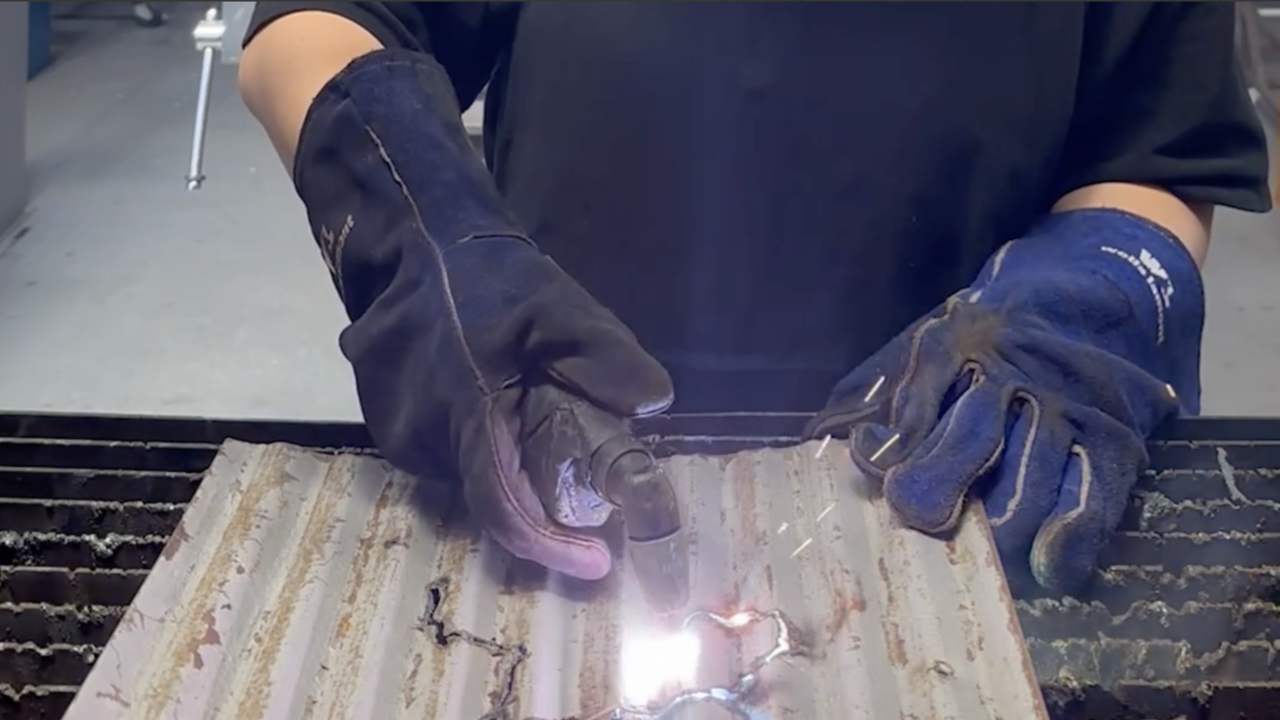Separated at Birth
Seeing double
Seeing double
'There is nothing in the world but uniqueness.' 1
In 1988, two three-dimensional milk crowns based on Harold Edgerton's famous photograph were produced. One was made by Jennifer Bolande; the other, lagging behind by only a month or two, was created independently by an artist who showed with the same gallery. On the dealer's advice, the second was not shown, but became its own frozen moment, an art historical shadow to the Bolande version. The impulse to materialise Edgerton's image in polished porcelain is a delicious and logical temptation; the picture asks for it. My point is not to celebrate either Bolande's piece or its shadow, but to ask what might seem like a really stupid question: if one is good, why not two? Editions, multiples, are okay - Bolande made six - but the same piece by two different artists? No way.
Some societies kill twins at birth. Should this be how we treat duplicate artworks? We still harbour notions about the uniqueness of creative expression, and these ideas combine with a market imperative to insist that there is only room for one thing, at one time. This system mimics that of scientific invention, based on notions of progress, in which only one of two simultaneous inventions - for instance the telephone - wins. (The other telephone, developed entirely independently, famously got to the patent office four hours too late). But the actual experience of looking at art, in real space and real time, invites more complex interpretative responses.
It is very possible that the production of two similar works means the idea is too easy, and no good. But it could also mean that it is doubly good. What is threatened by a doubled idea? It is hard to imagine that two versions would be exactly the same once materialised, but if this were possible, the phenomenon may be interesting in its own right. Each piece might then be read differently in relation to the nested contexts in which it was seen (exhibition venue, city, surrounding body of work...) Seen together, the two works could become each other's context, and point of comparison. Given the shareware quality of information saturation, it's not surprising that some people might think along similar lines. What is so scary about shared territory? What allows some artists to give themselves permission to stray close to another's work, and how close an approach can they (as artists), or we (as audience), tolerate? Is the terror of twinning connected to progress, and our collective fears about staying in one place?
I went looking for identical artworks, and I found a lot of local stories, in the form of embarrassed testimonials: ideas that got subtly nipped or radically detoured because of a sudden cold-water slap: discovering their resemblance to something else. We artists perform our own violent edits, seeking to differentiate our work as much as possible from the surrounding fields of poppies. If the unthinkable occurs, and two of the same are created - independent of each other - often, either one is etherised, or both are tainted by mutual association, and neither considered real. What makes it to market, to the magazines, to the public realm, has gone through numerous sieves to achieve at the very least the status of different.
Did Rachel Whiteread know about Bruce Nauman's A cast of the space under my chair (1966-68) when she began to cast negative space in the late 80s? Nauman's version (we are told) was anyway an enactment of a bit of advice from Willem de Kooning, transposed to a different medium (cement): 'If you want to paint a chair, don't paint the thing, but paint the spaces between the rungs of the chair'. As usual, Nauman's literal-mindedness took on unwieldy metaphysical dimensions once enacted, as well as becoming funny - he ended up, after all, with a chair, or at least, something to sit on. Whiteread's work is not so funny - the absence/presence issue is thicker and heavier (Nauman's for all its material weight is very light). Whether or not Whiteread knew of Nauman's piece also seems irrelevant to me - not because it is a few pages back in the books, but because what we do with her other work is clearly something different. Actually, I hope she did know, and persisted. The proliferation of information and access routes to it generates an equal share of blindspots, or gaps; when there is so much, there is that much more to miss; who is to know who saw what or when?
Vija Celmins' work is expressly limited in its image repertoire, and Gerhard Richter's expressly encompassing, but the two intersect at two distinct points - seascapes and bomber planes. The frontal ocean image is used to play with representational strategies: Richter's emphasis on processes of reproduction inspires a double response of familiarity and desire, and Celmins' images suggest a narrative of immersion in a process of drawing, that inspires an equal immersion in looking. But with the planes we see two painters living in different countries placing simultaneous focus on, and similar matter-of-fact treatment of photographs of the same resonant object. We tend to explain such similarities via art historical lineages - one curator underlined that while they were unaware of each other's work, they had both seen Warhol's disaster paintings - an example of art giving permission to make more art (so long as it is different). But as both artists were born in Europe just before World War Two (Richter, 1932, Dresden; Celmins 1939, Latvia), their childhoods were likely to have been populated by planes, and by the mid-60s they might simply have reached a time in their lives to think about that image. What seems to make the coincidence okay is the fact that neither artist's work had yet reached the fantastical (non) space of international renown, in which two of what is perceived as the same cannot mutually coexist.
Harold Bloom had a theory: that the anxiety of influence catapults art - and culture - forward. Suffering from 'the melancholy of the creative mind's desperate insistence upon priority' 2, artists take what was done before and perversely misinterpret it, as a way of claiming that territory as their own. Bad art results when the influence of the father prevails - when the son is not strong enough to overthrow him. What's good about Bloom is the off-balance quality of his theory and the perverseness of the idea of art as misinterpretation. His biggest problem, though, is the underlying ideological position that sees western civilisation declining in direct proportion to the intrusion of popular culture into civilised realms. Clearly the indiscriminate and vigorous practices of contemporary visual artists need some other paradigms than the familial for thinking about sameness, influence, and the need to be different. Perhaps these need to be imagined not on a linear or genealogical plan, but in horizontal or lateral terms. Given today's postmodern philosophical backdrop - obviously more relevant than Bloom's leapfrogging modernism, with its exclusion of difference - why are artists still so afraid of the spectre of influence?
In Chicago, a writer is finishing his book. He is in the final throes of the final draft after five years when a new book appears in Barnes and Noble, the movie of which is released almost instantaneously. Both stories concern an older man and a young boy; they travel; there is the threat of AIDS and then AIDS. But what's really odd is that there is a scene in both books that takes place in the parents' bedroom in which a dog pulls a syringe out of the toilet kit (and, later, both writers quote the same passage from Stendhal). It is not so hard to accept this coincidence of imaginations - especially with the Stendhal quote, which, who knows, may carry within it a mysterious abstract design for the bedroom scene - or else you might conclude, well they probably read a lot of the same literature (and art imitates art). But, practically, in order to publish, the Chicago writer will have to make a change. Who cares if one writes (stylistically) like William Faulkner and the other like Gertrude Stein? The potential to sell movie rights turns any novel into a plot summary. The need to be strikingly different ignores the possible pleasures of a search for subtlety - the surfaces and patterns and rhythms of any specific text, its 'stuff', independent of 'what happens'.
'What happens' is perhaps the level of interpretation we tend to hover at with visual works as well, translated into emphasis on the concept of a piece. Admittedly, this is what thrills me initially - the idea of a cast of underneathness resonates far more than hearing of someone enacting the same concept. But this ignores what might happen when looking at the work, involving context as well as differences obliterated by plot summaries. I admit to writing this article based on hearsay and reproductions (linked by unanswered questions). I would have loved to have seen those milk crowns side by side, to have the chance to consider their existence as doppelgangers in real space. Would the material qualities that only manifest through looking - in real time and real space (glaze bubbles, a slightly drooped knob, centimetres different in proportion) - balloon with significance?
Maybe the milk crown (now a drop from the sacrificial cow) is definitively instructive: in a review of Bolande's version, Matthew Weinstein pointed out that the image, beginning as a photograph, returns to being a photograph via the press shot. As it exists primarily in that form, through publications, both milkcrowns, not just Bolande's, are effectively vaporised as physical objects. Edgerton wins after all.
1. Brian Massumi, A User's Guide to Capitalism and Schizophrenia, 1992
2. Harold Bloom, The Anxiety of Influence, 1973
















